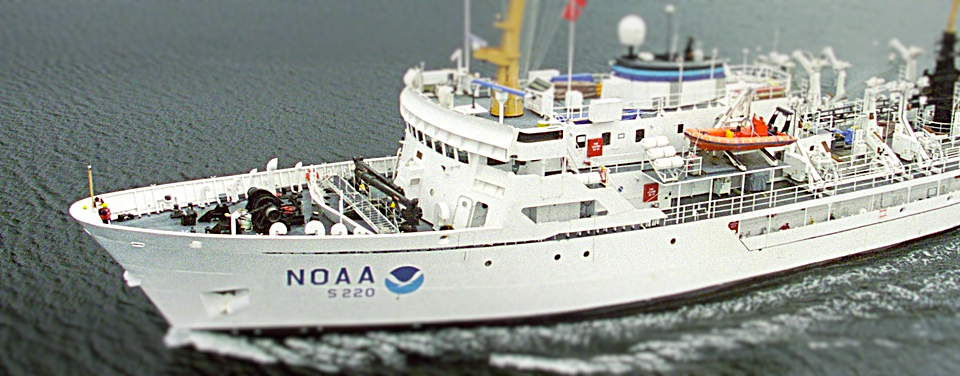NOAA Sets Sail for Hydrographic Survey Season
2014 surveys will cover more than 2,000 square nautical miles in U.S. waters.

Protecting Life and Property at Sea
The NOAA ship Fairweather, shown here, will collect data near Kodiak Island, Alaska, to supplement old depth measurements on nautical charts.
NOAA’s Office of Coast Survey will manage and conduct hydrographic surveys covering more than 2,000 square nautical miles in U.S. waters this year. Hydrographic surveys measure water depths and collect data that characterize the ocean floor, and are used to update nautical charts, identify hazards to navigation, map coastal habitats, and assist state governments with infrastructure projects (the siting of wind farms, for example).
Many of the NOAA survey ships, small boats, and hydrographic services contractors have set sail for their initial project areas, which include coastal portions of the Atlantic, Pacific, and Gulf of Mexico.
Highlights of the season will include a survey of Kodiak Island, Alaska, where NOAA Ships Rainier and Fairweather will collect data to supplement old depth measurements on nautical charts; a contractor survey of Bechevin Bay, the easternmost passage through the Aleutians from the Bering Sea to the Gulf of Alaska; a survey offshore of Rhode Island Sound, where NOAA Ships Thomas Jefferson and Ferdinand Hassler will identify a safe route for deep draft oil tankers; and a survey of critical areas in central Chesapeake Bay conducted by the NOAA Research Vessel Bay Hydro II.
In addition, NOAA’s six navigation response teams (NRTs), small two- or three-person boats equipped with multibeam and side scan sonar systems, will acquire data to address potential charting discrepancies such as outdated or incorrect data. The NRTs will conduct surveys in areas including San Francisco Bay, Galveston Bay, and offshore of Jacksonville, Florida.
Get Social
More Information
Did you know?
Protecting life and property at sea is the main objective of NOAA’s hydrographic survey program. “Accurate data is necessary to engage in intelligent debate and make sound ocean policy,” says Holly Bamford, PhD, assistant administrator of NOAA’s National Ocean Service. “Whether it’s a ship loading export products for overseas customers or a city planning to strengthen coastal resilience, they require the strong foundation provided by our hydrographic data and nautical charts.”
